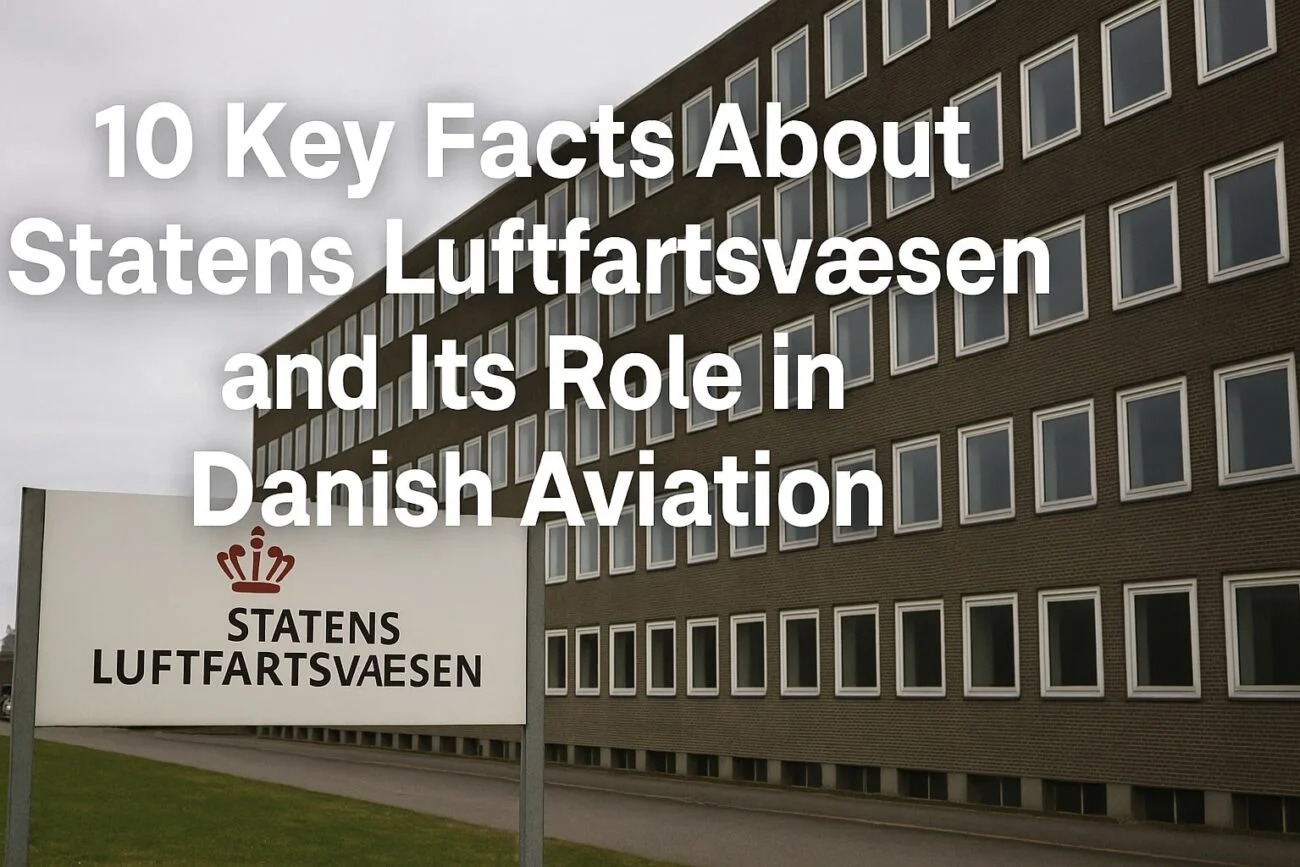1. Introduction: Why Statens Luftfartsvæsen Still Matters
Even though the Statens Luftfartsvæsen (SLV) no longer exists under its original title, its legacy remains deeply embedded in Denmark’s aviation framework. From safety protocols and infrastructure development to environmental regulation, SLV laid the foundation of what is now a globally respected airspace management system. But how much do we really know about this transformative agency?
2. The Birth and Legacy of Statens Luftfartsvæsen
Founded to oversee civil aviation in Denmark, SLV was the national authority responsible for everything in the sky—from pilot licensing and airspace safety to compliance with international treaties. It operated under the Danish Ministry of Transport for decades and became one of the most authoritative aviation bodies in Scandinavia. SLV was officially dissolved in 2010, merging into the Trafikstyrelsen (Danish Transport Authority).
3. Key Functions of the Former Danish Aviation Authority
Before its merger, SLV’s responsibilities were expansive:
- Licensing for pilots, crew, and engineers
- Certifying airport safety and infrastructure
- Regulating air traffic operations
- Ensuring compliance with ICAO and EASA standards
- Environmental noise and emissions control
- Aviation school accreditation and oversight
4. Safety Oversight and Air Traffic Regulation
One of SLV’s primary objectives was maintaining Denmark’s stellar safety record. It conducted regular inspections, investigated accidents, and enforced corrective actions. It also coordinated with Naviair, Denmark’s air traffic services provider, to ensure efficient and secure control of both civil and military airspace.
5. Pilot Licensing and Aviation Personnel Certification
SLV had strict protocols for licensing aviation professionals. Pilots underwent rigorous theoretical exams, simulator sessions, and health evaluations. Only those who met all safety, health, and knowledge requirements could earn or renew their licenses. This process safeguarded Denmark’s reputation for top-tier aviation personnel.
6. Environmental Impact and Noise Control Policies
Denmark is a global leader in green initiatives, and SLV played its part. It established noise regulation zones near airports, promoted eco-friendly aviation technologies, and encouraged the adoption of fuel-efficient practices. Through data collection and emission tracking, SLV contributed to sustainable aviation long before it was globally prioritized.
7. The 2010 Transition to Trafikstyrelsen
In 2010, as part of Denmark’s governmental reform, SLV’s functions were officially absorbed into Trafikstyrelsen. The aim was to unify the management of air, rail, and road transport systems, allowing for more coordinated and streamlined policies. While SLV ceased to exist as an independent entity, its frameworks and structures were carried over.
8. How Trafikstyrelsen Carries the SLV Torch
Trafikstyrelsen now oversees aviation in Denmark, continuing all critical SLV responsibilities:
- Pilot and crew licensing
- Aircraft and airport certification
- International coordination with ICAO, EASA, and Eurocontrol
- Noise and environmental oversight
It also integrates aviation policy with land and maritime transport, making Denmark’s regulatory environment more holistic.
9. SLV’s Role in International Aviation Compliance
SLV wasn’t just a local authority; it was a global player. It maintained Denmark’s adherence to international aviation treaties, facilitated ICAO audits, participated in European Civil Aviation Conference (ECAC) dialogues, and worked closely with EASA for harmonized European skies. This ensured that Danish airlines and airports could operate seamlessly across borders.
10. Infrastructure, Innovation, and Technological Upgrades
SLV contributed heavily to Denmark’s airport infrastructure. It managed radar installations, runway expansions, satellite communication systems, and digital licensing platforms. Even after the transition, many of these innovations are still in use today and serve as a base for ongoing advancements in Denmark’s aviation sector.
11. Why the Legacy of SLV Still Influences Danish Aviation
Though SLV was dissolved over a decade ago, its impact continues. Danish aviation laws, safety culture, training programs, and international partnerships still rely on principles developed by SLV. Whether you’re a pilot, policymaker, or aviation historian, understanding SLV is key to understanding how Denmark became one of the safest and most efficient aviation systems in Europe.
Conclusion:
The story of Statens Luftfartsvæsen is more than a historical account—it’s a blueprint for modern aviation excellence. From pioneering safety measures and rigorous pilot training to shaping eco-conscious airspace policies, SLV’s contributions still guide Denmark’s aviation ecosystem today. Although the agency officially ceased operations in 2010, its systems, values, and global partnerships live on through Trafikstyrelsen. As air travel continues to evolve, the legacy of SLV serves as a powerful reminder that well-structured governance can leave a lasting impact far beyond its time.

Leave a Reply